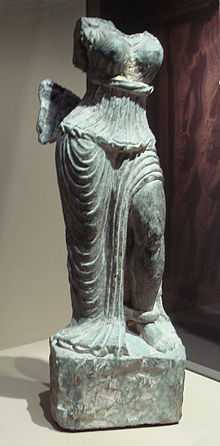Dharmarajika


The Dharmarajika is a large Buddhist stupa in the area of Taxila, Pakistan. It is thought that it was established by the Maurya emperor Ashoka in the 3rd century BCE around relics of the Buddha.The stupa is also popularly called as 'Chir Tope.'The site of divided into two parts: the stupa area in the south and his monastic area in the north.
The stupa of Dharmarajika is about 3 kilometers from the Taxila museum on a metalled road .Its importance lies in the fact that one of Buddha’s body-relics was buried there . The name Dharmarajika comes from Dharmaraja, a name given to Buddha who was the true Dharma Raja [Lord of Law ], according to Marshall. It is also believed that ‘Dharmarajika’ is derived from the word ‘Dhararaja’, a title used by Maurya emperor Ashoka. The stupa (15 meters high and 50 meters in diameter) is a circular structure with a raised terrace around its base. Around it is a passage for pradakshina and a circle of small chapels surround the great stupa. Three distinctive types of masonry in the buildings around the main stupa suggest the contributions of different periods to the building activity. A silver scroll inscription in Kharoshti and a small gold casket containing some minute bone relics, probably of Buddha were found here during excavation during British rule.
These structures were reinforced in the following centuries, by building rings of smaller stupas and constructions around the original ones. Several coins of the Indo-Greek king Zoilos II were found under the foundation of such a 1st-century BCE stupa.[1]
See also
Notes
- ↑ Marshall, "Excavations at Taxila", "The only minor antiquities of interest found in this building were twenty-five debased silver coins of the Greek king Zoilus II, which were brought to light beneath the foundations of the earliest chapel", p248
References
- "Taxila" Sir John Marshall